STEM was born with a visionary movement of people from various fields. It’s the brainchild of Mr. Srinivasan, a well-known entrepreneur in the fitness industry who has been…
Science, Technology, engineering, and Mathematics (STEM) permeate every aspect of today’s world, and the innovations that emerge from these fields…
The on-going programme of reform in our education system is driven by a shared policy focused on better outcomes for all learners, raising standards of teaching, learning, and…
Science:
1. Scientific inquiry
2. Scientific reasoning
Technology:
1. Application of scientific and…
Making the schools to extend their institutional expression of interest forms. Invite the same schools’ principals to attend our seminars which will be conducted in some…
The on-going programme of reform in our education system is driven by a shared policy focused on better outcomes for all learners, raising standards of teaching, learning and…
As the development of conceptual science knowledge represents complex, idiosyncratic processes, the choice of an adequate statistical model is…
NASA STEM @ Home for Students — Find crafting ideas, science experiments with household items and videos to watch as a family. Grades K-4 | Grades 5-8 | Grades…
Experiments in Science, Science Invention, NASA STEM Stars
Really good communication and quality training opportunities
Great environment and is supportive and friendly.
Nice working for a business that has such a clear impact. My time at STEM Global edu offered me a number of opportunities for progression and I was supported throughout.
Great benefits, including pension and holidays. Lovely building to work in and staff are supportive and friendly. Opportunities to learn and progress, which I have benefitted from whilst working here. Nice to work for company that has clear goals and vision and is making a positive impact.

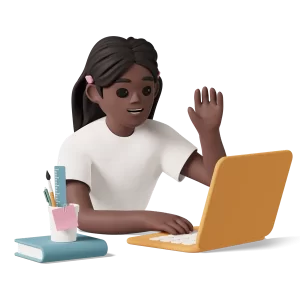
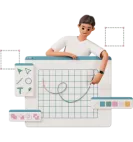
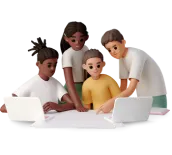

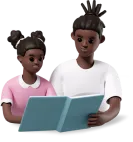
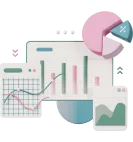
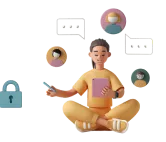

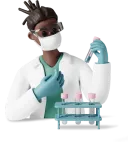
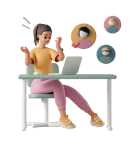
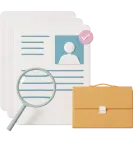
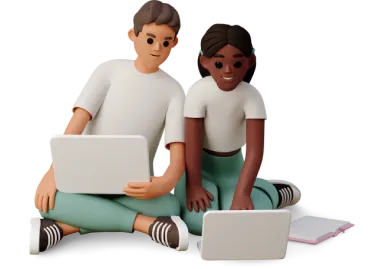
Copyright © 2025 STEM GLOBAL. All rights reserved.
© Designed and Developed By Cloudstar Digital
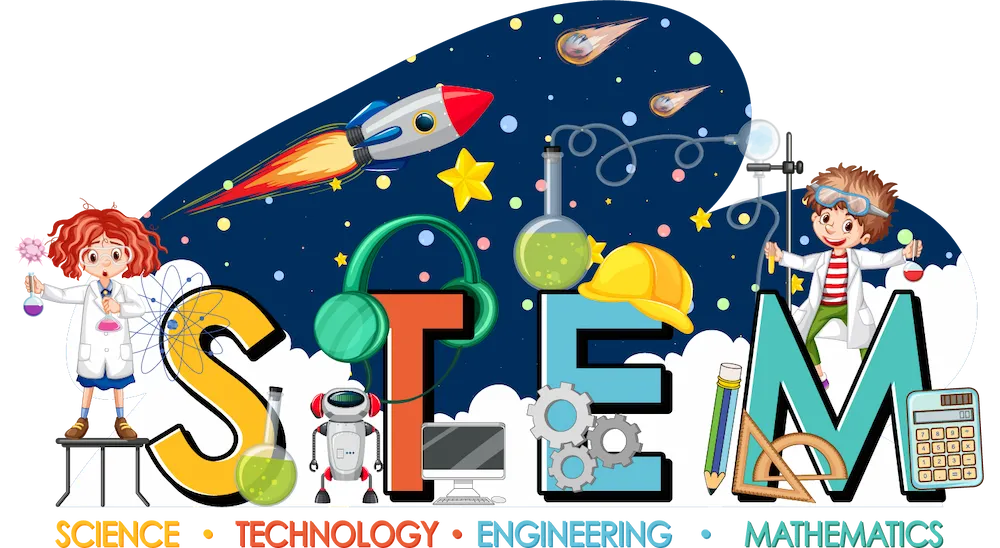
STEM was born with a visionary movement of people from various fields. It’s the brainchild of Mr. Srinivasan, a well-known entrepreneur in the fitness industry who has been recognized and celebrated by various bodies for his excellence in corporate management within the fitness industry.
STEM has Professor A. Vijaya Kumar on its advisory board. He has an impressive background as an educationalist with 40 years of experience, having been an international associate partner with the University of Cambridge, and is currently associated with the Ministry of Labour and Employment Service in the career management services division. Over the course of his career, Professor A. Vijaya Kumar has educated, trained, and developed more than 2.0 lakh teachers (200,000 teachers) in the last 30 years. Additionally, he has been part of the National mission to create an entrepreneurial ecosystem in India, where he has trained over 50 lakh (5 million) college students to create awareness of entrepreneurship as a career option. Furthermore, Professor A. Vijaya Kumar has provided corporate advisory services for various private and public enterprises as well as non-governmental organizations.
It’s wonderful to see the efforts of the whole STEM core management team in contributing to the various industries and education sectors, respectively. Their dedication and achievements have been duly recognized and have had a positive impact on society.
The Indian Educational System is at a crossroads.
Millions of students are at the goodwill of our educational planners, government policymakers, schools, teachers, and Parents.
All the above stakeholders are now putting their knowledge, skills, and experience to work to make education more interesting, knowledge acquisition more user-friendly, an integrated approach more competitive, and a complete solution for school-going children.
The STEM PROJECT that we are launching will have an interesting and interactive WEBSITE & an APP to encourage students to participate with natural enthusiasm.
We are also making our process a key emphasis under the ongoing New Educational Policies of the central and state governments to nurture students to become effective lifelong learners, equipped with appropriate knowledge and generic skills, as well as values and attitudes necessary for facing challenges in the 21st Century.
As a part of this programme, we are going to take ‘A’ GRADE students to NASA, U.S.A., and next Grade students to ISRO & other institutions of scientific importance in INDIA.
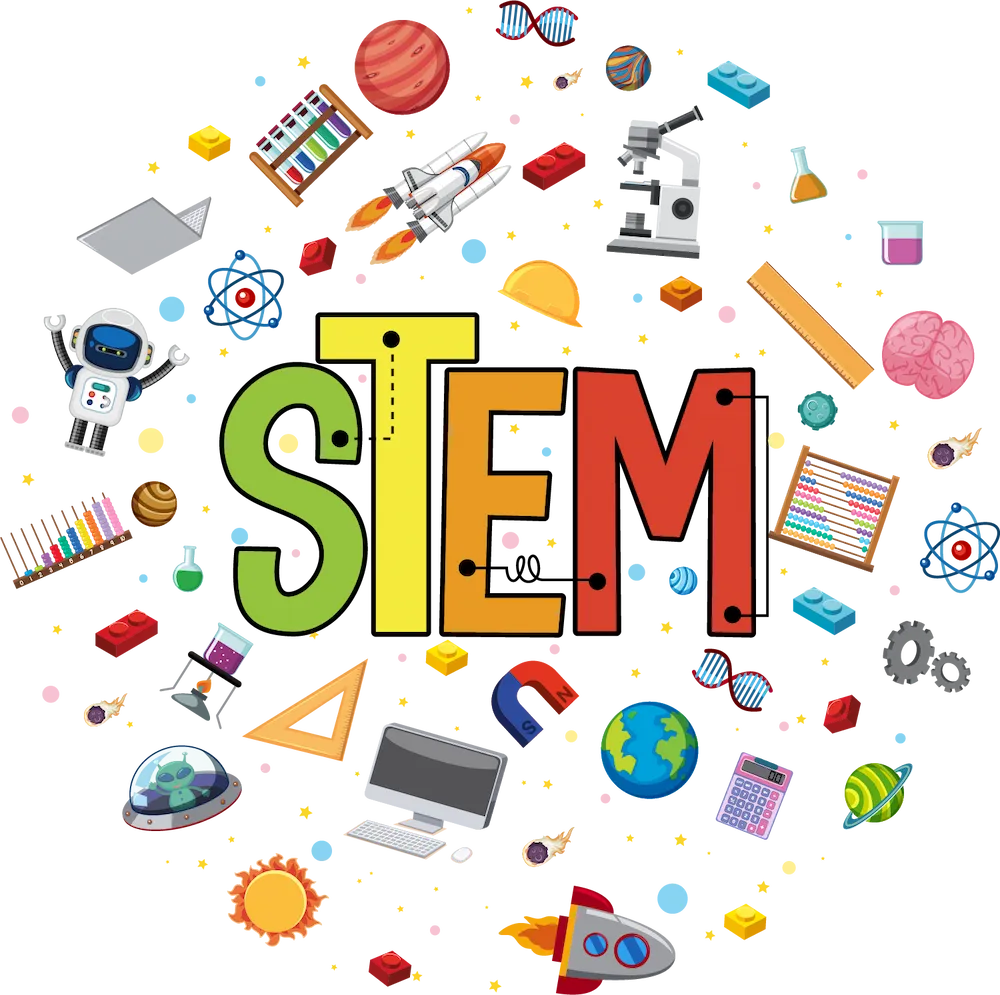
STEM is an acronym for the academic disciplines of
SCIENCE
TECHNOLOGY
ENGINEERING and
MATHEMATICS.
Science, Technology, engineering, and Mathematics (STEM) permeate every aspect of today’s world, and the innovations that emerge from these fields underpin much economic development, leading to the establishment of creative enterprises and rewarding careers.
Our education system plays a key role in equipping learners with the knowledge, skills, and dispositions to effect these changes.
STEM education is multifaceted and goes well beyond the main disciplines that constitute the acronym STEM.
The foundations for STEM education begin in early childhood. From the earliest years, through their play experiences and family environment, children engage with the world in ways that can promote Learning related to Science, Technology, engineering, and Mathematics.
Science enables us to develop our interest in and understanding of the living, material, and physical worlds and develops the skills of collaboration, research, critical inquiry, and experimentation.
Technology covers a range of fields that involve the application of knowledge, skills, and computational thinking to extend human capabilities and help satisfy human needs and wants, operating at the interface of science and society.
Engineering is about the design and creation of products and processes, drawing on scientific methods to provide the skills and knowledge to solve real-world problems.
Mathematics equips us with the skills needed to interpret and analyse information, simplify and solve problems, assess risk, make informed decisions, and further understand the world around us through modelling both abstract and concrete problems.
Engaging with high-quality STEM experiences at a young age can have a lasting impact on learners, as it can set the stage for their later engagement and success in these fields. Such experiences can encourage and support children to articulate and represent their explorations, discoveries, thinking, and understanding, which in turn can help build critical early STEM knowledge and skills.
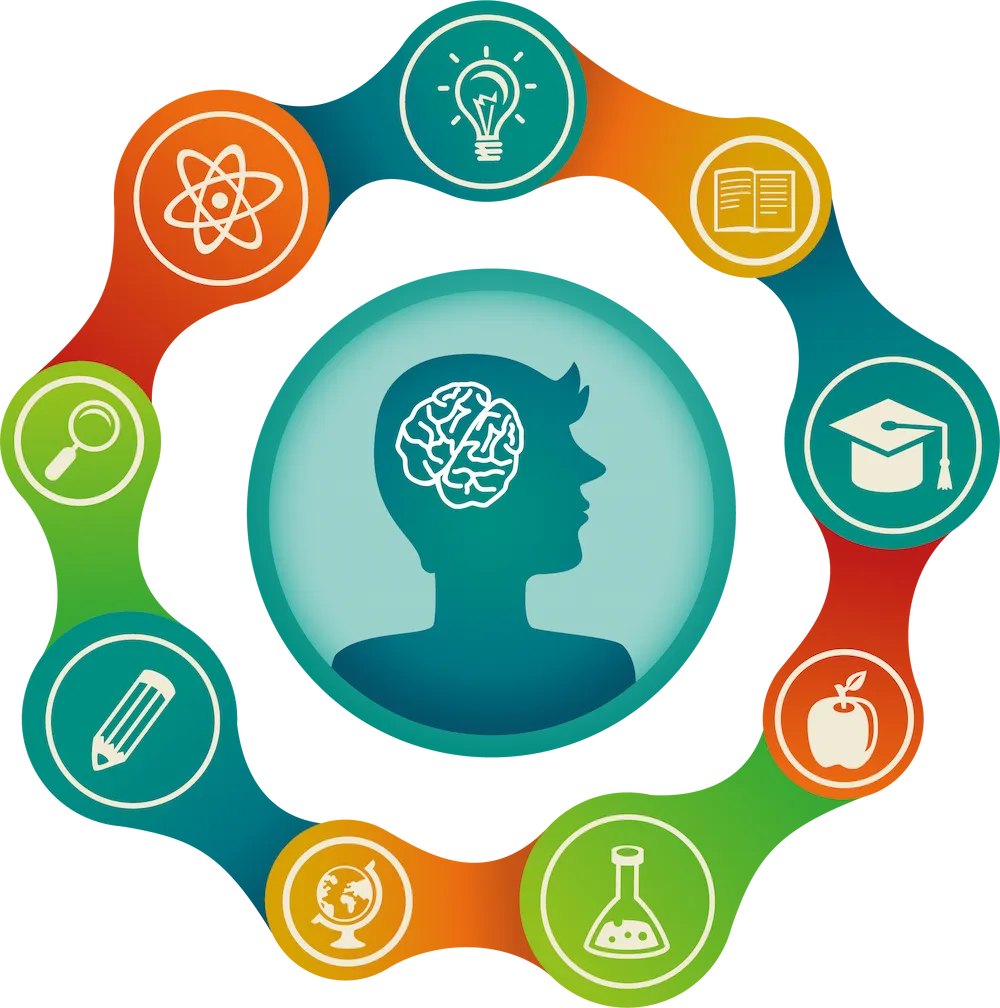
The on-going programme of reform in our education system is driven by a shared policy focused on better outcomes for all learners, raising standards of teaching, learning, and assessment, and school improvement.
Young people need to understand and be capable of using skills and concepts developed through STEM education to be active citizens, to engage with modern communications and media in a critical way, to ensure personal well-being, and to make informed choices about many aspects of their lives to develop skills and concepts among the students.
It focuses on skill-based learning.
The traditional methods of learning focused on memorization techniques.
It is an amalgamation of all four subjects into a comprehensive one through an interdisciplinary curriculum.
It helps students deal with real-world situations.
They apply their learning to create, innovate, and discover new things.
Also, it has been proven that students who adopt the STEM learning approach have better chances of getting placed at good companies.
Enhance critical thinking, motivate experimentation, and foster teamwork.
The foundations for STEM education begin in early childhood. From the earliest years, through their play experiences and family environment, children engage with the world in ways that can promote Learning related to Science, Technology, engineering, and mathematics
Science enables us to develop our interest in and understanding of the living, material, and physical worlds and develops the skills of collaboration, research, critical inquiry, and experimentation.
Technology covers a range of fields that involve the application of knowledge, skills, and computational thinking to extend human capabilities and help satisfy human needs and wants, operating at the interface of science and society.
Engineering is about the design and creation of products and processes, drawing on scientific methods to provide the skills and knowledge to solve real-world problems.
Mathematics equips us with the skills needed to interpret and analyse information, simplify and solve problems, assess risk, make informed decisions, and further understand the world around us through modelling both abstract and concrete problems.
With visionary education policy and the complexities of the new normal after the pandemic, the teaching and learning processes have changed forever.
To keep up with innovative changes like online schooling, Our academicians also identified that STEM education is the need of the hour. As of 2020, India saw an upward trend in these jobs. Clearly, STEM graduates have better employment prospects. 80% of the jobs in the upcoming years will require some form of math and science skills.
STEM players will rule the “JOBS OF TOMORROW”.
80% OF STUDENTS OR KIDS SPEND THEIR TIME AT HOME WITH THEIR FAMILY.
Parents can help children improve and enhance their STEM learning even further.
Kids enjoy experiential learning more when their parents actively participate in it.
This helps enhance their cognitive skills.
Parents can help promote STEM learning at home by allowing their children to participate in various household activities.
Encouraging kids to learn coding.
Use do-it-yourself (DIY) STEM education kits.
Teachers have to guide and manage students in the classroom to
view that students are actively engaged in critical thinking and problem solving.
Creative problem-solving skills with STEM lessons.
Students apply STEM concepts to solve real-world problems.
Bringing real-world applications to STEM subjects
Integrating core concepts for more dimensional learning
Allow students to experiment and create solutions.
Students can choose to follow the science experiment as written or put their own spin on the project.
Encouraging exploration and innovation to solve problems.
They are utilising it by doing projects like setting up candy wrappers, a leaning tower of pasta, a toothpick bridge, a backyard weather station, etc.
Your lessons will have criteria that students methods and prototypes should meet.
The assessment formats vary a great deal, ranging from traditional formats such as standardised tests to research-oriented observational methods.
(e.g., interviews, video analysis)
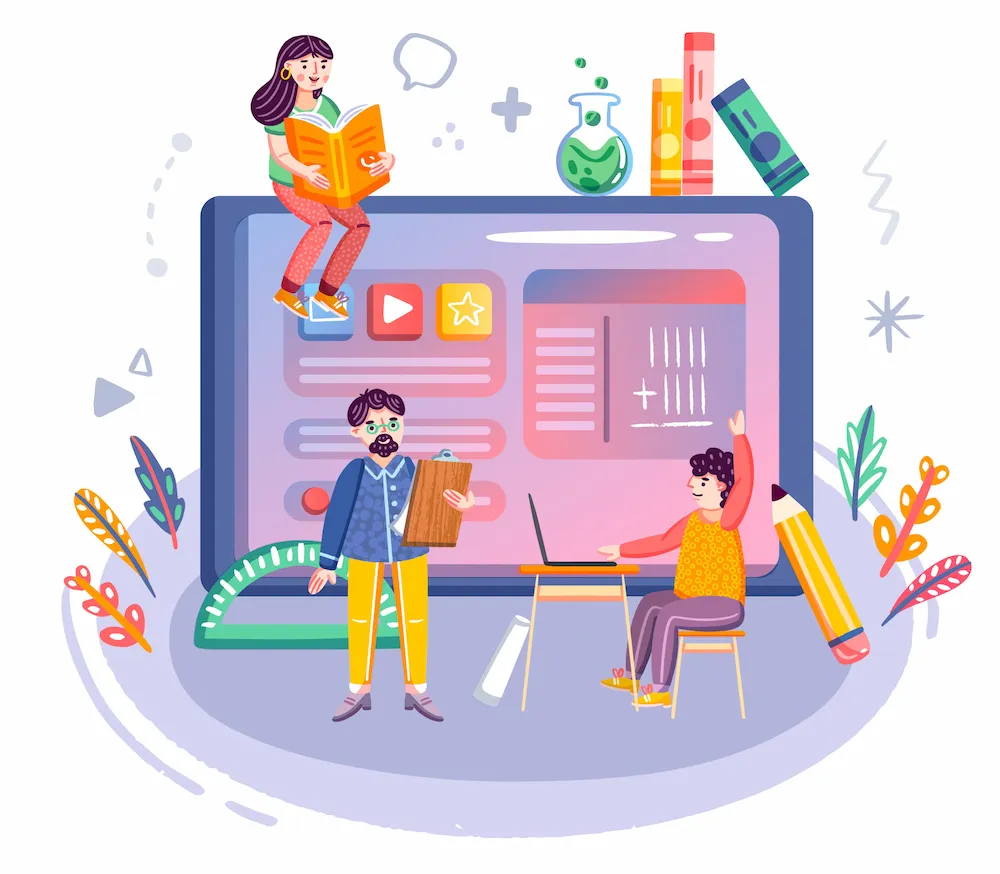
Purpose of STEM education- Nurturing talents for integration.
Concept of STEM education- Increasing students interest, connection to the real world, cultivation of integrated thinking abilities
Is the class designed to increase the students interest in scientific technology?
In the theme related to scientific technology in the real world?
Is the program designed to cultivate the integrated thinking abilities of students?
Learning standard framework of STEM classes- context presentation and creative design
Connections to the real world.
Interest and immersion
Is the process of creative design clearly revealed for the students to think about how they will solve the problem?
Is the class made up of activities focusing on play and experiences and is there a process for the students to personally devise and think about the issues at hand?
Is the class designed for various results (or ideas) to be presented by each students (or group) as a result of creative design?
The STEM fields are wide and varied, including:
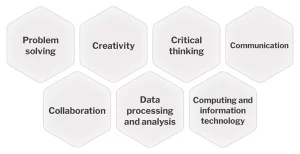
Some of the fields of STEM careers.
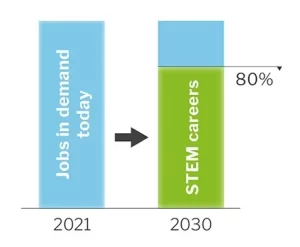
According to the Organization for Economic Cooperation and Development (OECD), many of the most in-demand jobs today will disappear by 2030.



STEM is an approach of teaching that’s larger than its constituent parts STEM removes the traditional barriers erected between the four disciplines, by integrating the four subjects into one cohesive curriculum the STEM challenge
Just as the nation’s economic engines and national security measures have come to rest squarely of science, technology, engineering and mathematics (STEM), American students are recoiling from these disciplines in record numbers.
Many students not receiving an adequate STEM education
Focus often on speciality or magnet high schools
STEM subjects not taught every day in many schools
29% of 4th-8th students report teaching science two or fewer days per Week The STEM challenge.
STEM prepares students for life, regardless of the profession they choose to follow. STEM teaches students how to think critically and how to solve problems- skills that can be used throughout life.
Improved STEM programs can create individuals capable of new solutions and better decisions Increased science and math capability is not enough Experiences centred on design, innovation, engineering, and technology increase creativity, inventiveness, ingenuity and imagination capabilities
These characteristics are fostered in STEM centred learning experiences. The STEM challenge,
Preparing the next- generation to succeed in life is a tall order. And, we will substantially fail if we don’t teach children how to think critically and solve ill-structured problems.
More engaged learning/ less lecture;
More ill-structured problem solving;
More strategies that cause students to seek STEM content answers;
More underrepresented populations engaging in STEM; and,
More collaborative learning experiences.
Problem solving ability development
Leadership/ teamwork development
Ethics and responsibility
Invention, imagination, and ingenuity
Communication skill development
Invention and innovation
Generate & research ideas
Interrogating our personal bank of knowledge (Mental warehouse) Existing common body of knowledge Quality of design?
Different points of view
First, recognize that there is a problem.
Too many Indians don’t see the real-life value of STEM.
The Indian economic advantage is centered on our ability to innovate/ create new ideas
Integrated STEM education can supply that product.
Innovation is what allows the Indian to compete.
Creating new marketable ideas starts with STEM education.
STEM teachers pose problems and combine problem solving with project based learning across disciplines.
Developing students critical thinking, communication, assessment, and inquiry skills.
Real-world problem-solving is the essence of STEM lessons. Solving real-world problems causes students to use/expand higher-order thinking skills.
Identifying creative, real-world problems for students is the essence of STEM teaching.
Apply math/science through authentic, hands-on learning
Include the use/creation to technology requires the use of the engineering design loop
Require collaborative teamwork emphasize math/science/technology standards address real-world problems
Creativity- Thinking on their feet, ‘outside the box’.
Confidence-n Building confidence needed to thrive in a competitive workplace.
Problem solving- Without realizing it, students are consistently challenged to solve problems. This develops skills in reasoning and understanding.
Focus – Balancing listening/contributing involves a great deal of concentration/focus.
Communication- Defending ideas/theories is a core skill and one that is required throughout life.
Receiving constructive feedback- feedback is part of learning/ part of (not everyone gets a trophy!)
Collaboration – students work together, share responsibility, and compromise with others to accomplish a common goal.
Dedication- students practice developing healthy work habits (on-time, prepared, respecting the contributions of others).
Accountability- understanding that their actions affect other people.
Use ill-structured, design based STEM problems.
Utilize the engineering design loop
Focus on conducting research/information gathering
Use content rich/real-world problems
Integrate content from multiple disciplines
Offer problems with multiple potential solutions
Use collaborative, team-based strategies
Use performance-based assessment measures
Provide opportunities to present/defend ideas
Utilize content experts outside school
Problem solving skills
Self-directed learning skills
How to find/use resources Critical thinking Expanded knowledge base Performance ability
Social and ethical skills
Proactive thinking
Self-sufficiency & self-motivation
Facility with computer
Leadership skills
Ability to work on a team
Communication skills
Workspace skills
Proficiency in world languages competitive skills policy brief
21st century standards 21st century assessments 21st century curriculum & instruction 21st century learning environments partnership for 21st century skills.
Builds understanding across and among core subjects as well as 21st century interdisciplinary themes emphasizes deep understanding rather than shallow knowledge engages students with the real world data, tools, and experts they will encounter in college, on the job, and n life-students learn best when actively engaged in solving meaningful problems. Allows for multiple measures of mastery

NASA STEM @ Home for Students — Find crafting ideas, science experiments with household items and videos to watch as a family.
NASA Science at Home — From formal lesson plans to amazing imagery and stories about how science and exploration are lifting our world. There will also be ongoing opportunities to chat and interact with scientists directly.
NASA’s Space Place — videos, activities, crafts and more for kids.
Learning Space with NASA at Home — activities for a variety of grade levels.
Coloring Books — Activities and coloring pages on a wide variety of NASA topics.
Life at the Lab — Behind-the-scenes videos of concepts and technologies.
Download NASA apps — The NASA app offers news and multimedia from around the agency; other applications focus individual NASA projects or research areas.
Wavelength — a broad collection of materials about NASA science missions and their research.
Astronomy and Planetary Exploration
Code a Mars Helicopter Video Game — Create a video game that lets players explore the Red Planet with a helicopter like the one going to Mars with NASA’s Perseverance rover.
Dial-a-Moon: Download a high-resolution image of the Moon for any day in 2020.
Eclipse Activities — Models and activities that explain the science behind eclipses.
Exoplanet Coloring Pages — Use your imagination to explore planets beyond our solar system.
Exoplanet Travel Bureau — Take a trip outside our solar system.
ExoQuest — Travel into deep space in search of strange and unusual planets that lurk beyond our solar system – called exoplanets. Amaze your family and friends with the knowledge you will gain and the discoveries that you will uncover.
Eyes on Exoplanets — There are billions of planets in our galaxy, many in Earth’s size range. Explore these strange, new worlds.
Five Ways to Find an Exoplanet — How do scientists find planets beyond our solar system?
Galaxy of Horrors — A planet where it’s raining glass? Terrifying. Explore it and other bizarre worlds.
Hubble Space Telescope — Online activities to learn about the universe, the amazing images Hubble has taken, and the fascinating history of the telescope.
Hubblesite Resource for Learning — Resources for learners that span the Hubble Space Telescope’s mission, from its beginning to the innovative science it is enabling today.
Learn Science — Educational activities related to NASA’s scientific research for a variety of age groups.
Life and Death of a Planetary System — How did we get here? How do stars and planets come into being? What happens during a star’s life, and what fate will its planets meet when it dies? Come along on this interstellar journey through time and scientific detective work.
Magnetospheric Multiscale Mission — Make a paper model of NASA’s mission to study how the Earth and Sun transfer energy to one another.
Make the Most of Your Universe — activities to learn about the universe from the team at NASA’s Chandra X-ray Observatory.
Moon Observation Journal — a printout you can use to track the phases of the Moon.
NASA’s Universe of Learning at Home –- Activities for all ages to engage in the science of NASA astrophysics and astronomy from home.
Parker Solar Probe — At-home activities to learn about the Sun.
Print and Share — Posters and lithographs to download and share from NASA’s Lunar Reconnaissance Orbiter.
Space Travel Hazards Game — Can you travel through space safely? Learn how radiation in space can affect mission success.
The Sun and the Earth — Lesson plans and other materials on the relationship between the Sun and the Earth.
ViewSpace –- A web-based collection of digital interactives and hundreds of videos highlighting the latest developments in astronomy and Earth science.
What Did Hubble See on Your Birthday — In 30 years, the Hubble Space Telescope has taken pictures on every date on the calendar. Find it what it was looking at on your birthday.
Aerosols Quiz — Answer a few questions to learn about aerosols — tiny particles suspended in our atmosphere — and the Plankton, Aerosol, Cloud, ocean Ecosystem (PACE) mission.
Globe educational resources — The Global Learning and Observations to Benefit the Environment (GLOBE) Program allows students and the public worldwide to participate in data collection and the scientific process, and contribute meaningfully to our understanding of the Earth system and global environment. Resources by grade: K-2 | 3-5 | 6-8 | 9-12.
EO Kids — activities and materials from NASA’s Earth Observatory, showing how NASA studies the Earth from space, from the air and on the ground.
Global Precipitation Measurement mission education — A variety of educational activities, sortable by type and grade level, on NASA’s mission to study Earth’s water cycle, weather and climate.
Fun Zone — Videos, activities and interactives about NASA’s mission to study Earth’s ice-covered regions.
The Carbon Cycle Game: Travel along the marine carbon cycle and learn about the ocean. (Grades 9-12)
“Which Phytoplankton Are You?” Quiz — Answer four questions to discover which of these diverse organisms is most like you!
How to Draw Artemis — Draw the rocket that will take the next astronauts to the Moon.
Imagine You’re an Astronaut — It can be a little cramped staying inside the space station all that time. Astronauts still need to do their everyday living. Imagine you and your family are astronauts on the space station right now. How would you adapt to the challenges and still keep doing important routines, like exercising, learning and making time for fun?
Space Communications and Navigation — activities to learn about how NASA communicates with spacecraft and helps them navigate through space.
NASA SOLVE — Interested in helping NASA solve tough problems? Visit NASA SOLVE, where you’ll find opportunities to participate in challenges, prize competitions, crowdsourcing, and citizen science activities”
Space Tech Activities for Junior Explorers — explore what NASA and our national parks have in common and how space technology benefits your life, parks and the planet.

NASA STEM @ Home for Students — Find crafting ideas, science experiments with household items and videos to watch as a family.
NASA Science at Home — From formal lesson plans to amazing imagery and stories about how science and exploration are lifting our world. There will also be ongoing opportunities to chat and interact with scientists directly.
NASA’s Space Place — videos, activities, crafts and more for kids.
Learning Space with NASA at Home — activities for a variety of grade levels.
Coloring Books — Activities and coloring pages on a wide variety of NASA topics.
Life at the Lab — Behind-the-scenes videos of concepts and technologies.
Download NASA apps — The NASA app offers news and multimedia from around the agency; other applications focus individual NASA projects or research areas.
Wavelength — a broad collection of materials about NASA science missions and their research.
Astronomy and Planetary Exploration
Code a Mars Helicopter Video Game — Create a video game that lets players explore the Red Planet with a helicopter like the one going to Mars with NASA’s Perseverance rover.
Dial-a-Moon: Download a high-resolution image of the Moon for any day in 2020.
Eclipse Activities — Models and activities that explain the science behind eclipses.
Exoplanet Coloring Pages — Use your imagination to explore planets beyond our solar system.
Exoplanet Travel Bureau — Take a trip outside our solar system.
ExoQuest — Travel into deep space in search of strange and unusual planets that lurk beyond our solar system – called exoplanets. Amaze your family and friends with the knowledge you will gain and the discoveries that you will uncover.
Eyes on Exoplanets — There are billions of planets in our galaxy, many in Earth’s size range. Explore these strange, new worlds.
Five Ways to Find an Exoplanet — How do scientists find planets beyond our solar system?
Galaxy of Horrors — A planet where it’s raining glass? Terrifying. Explore it and other bizarre worlds.
Hubble Space Telescope — Online activities to learn about the universe, the amazing images Hubble has taken, and the fascinating history of the telescope.
Hubblesite Resource for Learning — Resources for learners that span the Hubble Space Telescope’s mission, from its beginning to the innovative science it is enabling today.
Learn Science — Educational activities related to NASA’s scientific research for a variety of age groups.
Life and Death of a Planetary System — How did we get here? How do stars and planets come into being? What happens during a star’s life, and what fate will its planets meet when it dies? Come along on this interstellar journey through time and scientific detective work.
Magnetospheric Multiscale Mission — Make a paper model of NASA’s mission to study how the Earth and Sun transfer energy to one another.
Make the Most of Your Universe — activities to learn about the universe from the team at NASA’s Chandra X-ray Observatory.
Moon Observation Journal — a printout you can use to track the phases of the Moon.
NASA’s Universe of Learning at Home –- Activities for all ages to engage in the science of NASA astrophysics and astronomy from home.
Parker Solar Probe — At-home activities to learn about the Sun.
Print and Share — Posters and lithographs to download and share from NASA’s Lunar Reconnaissance Orbiter.
Space Travel Hazards Game — Can you travel through space safely? Learn how radiation in space can affect mission success.
The Sun and the Earth — Lesson plans and other materials on the relationship between the Sun and the Earth.
ViewSpace –- A web-based collection of digital interactives and hundreds of videos highlighting the latest developments in astronomy and Earth science.
What Did Hubble See on Your Birthday — In 30 years, the Hubble Space Telescope has taken pictures on every date on the calendar. Find it what it was looking at on your birthday.
Aerosols Quiz — Answer a few questions to learn about aerosols — tiny particles suspended in our atmosphere — and the Plankton, Aerosol, Cloud, ocean Ecosystem (PACE) mission.
Globe educational resources — The Global Learning and Observations to Benefit the Environment (GLOBE) Program allows students and the public worldwide to participate in data collection and the scientific process, and contribute meaningfully to our understanding of the Earth system and global environment. Resources by grade: K-2 | 3-5 | 6-8 | 9-12.
EO Kids — activities and materials from NASA’s Earth Observatory, showing how NASA studies the Earth from space, from the air and on the ground.
Global Precipitation Measurement mission education — A variety of educational activities, sortable by type and grade level, on NASA’s mission to study Earth’s water cycle, weather and climate.
Fun Zone — Videos, activities and interactives about NASA’s mission to study Earth’s ice-covered regions.
The Carbon Cycle Game: Travel along the marine carbon cycle and learn about the ocean. (Grades 9-12)
“Which Phytoplankton Are You?” Quiz — Answer four questions to discover which of these diverse organisms is most like you!
How to Draw Artemis — Draw the rocket that will take the next astronauts to the Moon.
Imagine You’re an Astronaut — It can be a little cramped staying inside the space station all that time. Astronauts still need to do their everyday living. Imagine you and your family are astronauts on the space station right now. How would you adapt to the challenges and still keep doing important routines, like exercising, learning and making time for fun?
Space Communications and Navigation — activities to learn about how NASA communicates with spacecraft and helps them navigate through space.
NASA SOLVE — Interested in helping NASA solve tough problems? Visit NASA SOLVE, where you’ll find opportunities to participate in challenges, prize competitions, crowdsourcing, and citizen science activities”
Space Tech Activities for Junior Explorers — explore what NASA and our national parks have in common and how space technology benefits your life, parks and the planet.

